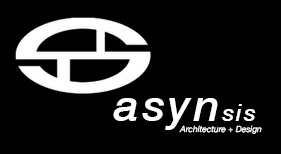Bio 2 Cosmo-mimesis: a new design paradigm
How Simplexity Emerges from Entropy. DaVinci & Kepler’s code 4 spatial beauty & harmony also geometric temporal signature of optimisation & sustainability.
How to design, construct and operate architecture and design projects more efficiently, with “Form follows Flow” & “More for Less” strategies, thereby “Synergsising Simplexity”.
Nigel Reading RIBA LEED GA
Made in Macau – Form follows Flow
Nigel’s form definitely results from his life flow; he was conceived at the Bouavista Hotel overlooking the Praya Grande on his parents’ honeymoon.
So this is a certain kind of homecoming, to reflect on creation and design at a fundamental and admittedly sometimes, highly romantic level.
His parents’ descent was from China, India, England & Wales, far-flung diasporas from the Roman, Mughal, Qing & British empires.
Early memories of Hong Kong Victoria harbour and it’s sweeping natural panoramas, (its amphitheatrical form the legacy of a super volcano over 100m years ago) inspired him to see the city as the natural and human world in micro-cosm.
His parents migrated to Australia just as he reached primary age, so he was also reared in Western Australia, also taking secondary school where he learned it was very important to question prevailing orthodoxies and that improving the mind meant also via sports – honing the body, in the tradition of the Greeks.
His fascination with all things Hellenic continued at UWA, where he took Homeric history and Anthropology, that and an interest in how the western and eastern worlds interacted to create the fusion culture dynamic of Hong Kong spurred him to move to London where he worked in bars, saved for a motorbike and toured Egypt, Greece and Italy, returning to the UK via France.
This gap year/grand tour convinced Nigel that architecture was the best synthesis of his interests across the arts and sciences, as it ensured a training in holistic thinking and a balance between both divergent but also convergent thought, the irrational and rational.
At the same time, on almost exactly the same timeline (to the year) of his conception (that dates him), Chaos and Complexity theory and Fractal geometry, the geometry of Nature in both space and time was being explored.
As architects practiced applied geometry, it was a natural course of investigation, and through sheer good luck and timing, Nigel was able to take a course at the Engineering & Science faculty, Westminster University and also in Environmental Engineering and Professional Practice at the Bartlett, UCL, supplemented with research at the British Library, that led to his Masters thesis being published in AD magazine in 1994, followed by a seminar at the Architectural Association School, as invited by Tom Verebes, now of HKU.
After that absolutely nothing happened for 17 years.
He got on with the career, delivering projects as diverse as NM Rothschiled & Sons, BBC White CIty Broadcast centre, Eden Project – East London Line with ARUP and just before returning to Asia, the Maitreya Buddha project, largest statue building in the world at the time.
The 1997 Handover in HK, where Nigel returned to celebrate for the Chinese and commiserate with the British, was the moment when he realised that the call of Asia and family was going to be irresistible – so after nearly two decades in London he finally returned via a sojourn in Australia, first to Hong Kong then Macau (delivering a Shangri-La in Shanghai and both designing and delivering the Grand Hyatt at CoD right here in Macau.
The last 5 years has been fruitful too, designing and delivering all manner of projects all over China, most recently for Disney and InterIKEA and right now again here in Macau for Galaxy – but most importantly, his finest works so far – two handsome, precocious sons, Nio & Max with his Shanghaiese wife Vanessa.
Two years ago, a professor of mechanical engineering at Duke university, a graduate from fresher to PhD of MIT, Adrain Bejan, published a book called Design in Nature, where he described how nature “always evolves to flow more easily.”
Nigel stumbled on it via Twitter, contacted Adrian saying that his work was very similar to Nigel’s own work and was surprised & delighted to be invited to meet Adrian and his colleague Sylvie Lorente in Hong Kong.
Since then, well – over to you Nigel…

